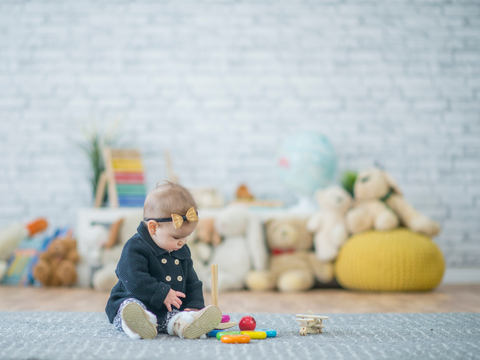What is a toy rotation?
A toy rotation is a method of organising and managing a child’s toys and educational resources in order to keep them interested and engaged, rather than being overwhelmed and bored. The idea behind toy rotation is to periodically switch out the toys that are available for the child to play with, so they have access to new and varied items.
Toy rotations can be done on a weekly, fortnightly, or monthly basis, depending on the preferences of the parent or caregiver. The purpose of toy rotation is to keep the toys fresh and new, avoid boredom, and encourage creativity and imagination. It can also help children develop important skills such as focus, concentration, and cooperation.
What are 7 benefits of toy rotations for kids?
- Encourages Creativity and Imagination: Toy rotations allow children to experiment with different toys and engage their imagination, leading to increased creativity and problem-solving skills.
- Promotes Independence: By rotating toys, children learn to entertain themselves and become more independent, which can help with their overall development. Further to this, they may not have mastered the skills for the new activities which promotes independent learning.
- Avoids Boredom: Children can get easily bored with the same toys, but rotating them keeps things fresh and new, avoiding boredom. This is a wonderful way to ensure your investment into toys is being put to its best use. By swapping toys around your child will re-discover old favourites, or even develop an interest in toys they previously looked over.
- Increases Focus and Concentration: When children have access to new and varied toys, they are more likely to stay engaged and focused on their play, leading to improved concentration skills. When your child sees old toys, they may have to remaster the skills they require.

- Enhances Fine Motor Skills: Rotating toys helps children develop fine motor skills as they explore and play with different objects. Look at our blog on different ways to play with blocks as an example of how playing with the same toys can be done in new and exciting ways.
- Promotes Sharing and Cooperation: When children share toys during rotations, it can encourage teamwork and cooperation, helping to build important social skills. This may not be possible in a home environment if they aren’t playing with other children, but it is evident that these skills are enhanced in a childcare environment.
- Supports Cognitive Development: Toy rotations expose children to a variety of textures, shapes, and sizes, which can help with their overall cognitive development and brain stimulation. By changing the toys on display and available to your child, they will learn to play in new ways.

What if your child doesn’t like toy rotations?
If your child doesn’t seem to enjoy toy rotations, it may be because they are resistant to change or have a strong attachment to certain toys. In this case, it’s important to approach toy rotations in a way that is sensitive to your child’s needs and preferences. Here are a few strategies that may help:
- Gradual Implementation: Start with a few toys at a time and gradually increase the number of toys that are rotated. This can help your child get used to the concept and make the transition easier. You could even swap some, but keep others available, so it’s not a huge change in one day.
- Involve Your Child: Ask your child to help you choose which toys to rotate, and involve them in the process of switching out the toys. This can make them feel more in control and less resistant to the change. Much like asking what colour plate they might like, you can allow your child some autonomy. Ask for their input and advice and this may help dissolve some of the resistance they feel.
- Keep Favourite Toys Accessible: Make sure your child’s favourite toys are always easily accessible and not part of the rotation. This can help to provide a sense of comfort and stability during the transition. If your child loves a particular doll or teddy, or they play with a particular toy daily, they may find it distressing to have it removed. The idea of toy rotation is to encourage new types of play and experience fresh eyes on old resources, not to make your child upset.
- Be Patient: Toy rotations can take time to get used to, so be patient and give your child time to adjust. Encourage them to try out the new toys and provide positive reinforcement for their efforts. As always, your child is learning from you, so stay positive and be engaged in play with them to help.
- Offer Explanations: Explain the reasons for rotating toys, such as keeping things fresh and new, avoiding boredom, and promoting creativity. This can help your child understand the purpose of toy rotations and be more open to the concept.
Ultimately, it’s important to remember that every child is different and what works for one may not work for another. By being patient and flexible, you can find a toy rotation system that works best for your child.


